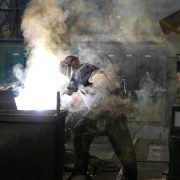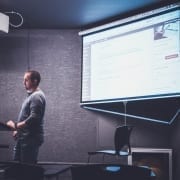Forget Balance: How COVID-19 Drives Home the Importance of Work-Life Blending

COVID-19 simply accelerated the trend that has been taking place for years. In my TEDx Talk, Blendification® of Work and Life, I highlight that social, technological, and economic impacts are forcing work and life together. The work/life balance myth has run its course. Here are some observations from the focus on work/life balance:
Work/life balance has become a cover for “look at how hard I am working.” Over the years, I have never heard anyone say, “I need more balance, I am spending way too much time with my family.” More accurately, it is the reverse. People are constantly saying they “need more balance,” which is code for “I am working too hard” or “look at how hard I am working.” They are typically bringing attention to their work ethic as if it is a badge of honor. As a result, work/life balance has turned into a personal proclamation about my strong work ethic at the expense of my personal and family life.
Work/life Balance creates an adversarial relationship between the two. When pursuing work/life balance, an adversarial or competitive relationship becomes prevalent. When this happens, people begin to keep score. It is not uncommon to hear people add up their work hours and become frustrated when they exceed what they consider “balanced.” The pursuit of balance is a futile quest. If you are pursuing your human potential, you cannot separate work and life. You will never achieve equilibrium between the two.
Work and home life do not happen in averages. Life happens in extremes, but we talk about it in averages. As someone once told me: “If I have one foot in a boiling hot bucket of water and the other in ice cold water, the average is fine, but I am not feeling fine!” That describes work and home life. There are constant demands that create the need to be in one area or the other. With fluctuating and conflicting demands, pursuing balance is unrealistic.
While work/life balance has proven to be a myth, blending work and life is more realistic and aligns with social, technological, and economic trends. There are two aspects to consider when blending work and life: the physical and the psychological. Here are some insights into each:
Physical Blending Work and Life
As the novel coronavirus swept the world, companies scrambled to create work-from-home capabilities. As mentioned, this accelerated the trends that were already taking place. Organizations quickly leveraged technology to enable a transition from working in an office to working from home. In some cases, this was done hastily because there were tangible deadlines and corresponding health consequences. As work becomes more integrated physically with homelife, here are ideas that will be helpful going forward:
- Provide guidance to employees (directional and financial) in setting up dedicated workspace.
- Make recommendations on boundaries to reduce “interference.”
- Update policies and procedures with detailed expectations related to working from home.
- With increased risk of technology and security breaches, make sure you have updated your protection and keep enhancing it since hackers see an opportunity in penetrating our data.
- Maintain standards in work attire for those participating in online meetings.
- Create dedicated technology-driven social events.
Psychologically Blending Work and Life
While most of the focus has been on the physical aspects of blending work and life, the true benefits of a blended life are psychological. The millennial generation has opened our eyes to the need to pursue our human potential by positively impacting the world. Given that we spend over 50% of our waking time at work or in work-related activities, we cannot possibly realize our human potential without incorporating work. As a result, the workplace becomes one of the primary areas where people pursue their potential and maximize their impact on society.
What happens at work, happens at home, and this inherent connection is key to creating a better workplace, better homelife, better customers, and better communities. When workplace organizations recognize the importance of growing and developing their employees—not just their job-related skills, but their personal and leadership skills—they will see happier and more fulfilled employees taking pride in their entire life. Here are some points related to developing the psychological aspects of blending work and life:
- Develop, define, and disseminate your desired culture to make it so compelling and strong that it is alive when employees are working from home.
- Align your culture with a motivating cause.
- Create a strategic platform that sets clear strategic focus, outcomes, and actions that are connected to the organization’s culture and cause.
- Cascade the strategic platform throughout the company through internal peer accountability groups (we call them Roots Groups in The Blendification® System).
- Institute ongoing training and development around activating your employees’ human potential, leading to greater lifelong fulfillment.
- Build an ongoing communication and operating system that blends your culture, strategy, and execution, linking employees’ daily work to meaningful outcomes.
The illusion of work/life balance has been revealed with the response to the COVID-19 outbreak. It is time to embrace the trends that have been taking place for years and leverage work to enhance employees’ lives, customers’ lives, and the benefits to their communities. Since COVID-19 accelerated working from home, business leaders now have the opportunity to increase their company’s impact by blending work life and homelife.
About the Author













Leave a Reply
Want to join the discussion?Feel free to contribute!